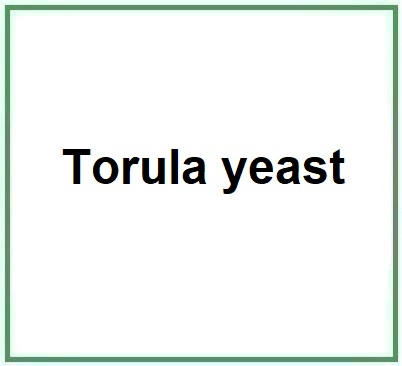Torula yeast, scientifically known as Candida utilis, is not just any yeast. It's a byproduct of the paper industry, where it's grown on wood sugars, specifically from the spent sulfite liquor process. However, for culinary and nutritional applications, it's typically cultured on molasses, which provides a sustainable and efficient growth medium. This yeast thrives, consuming the sugars and minerals present, and in the process, it multiplies and produces a biomass rich in proteins, vitamins, and minerals.
Nutritional Depth
- Calories: About 350 kcal, but can vary depending on processing.
- Protein Quality: High protein content, up to 50% of its dry weight, making it a good source of plant-based protein. Torula yeast's protein is high in quality, containing all nine essential amino acids, making it a complete protein source. This is particularly important for those following plant-based diets who might find it challenging to obtain complete proteins.
- Vitamin B Complex: Rich in B-complex vitamins, especially B1, B2, B3, and B6, which are essential for energy metabolism. The richness in B vitamins makes Torula yeast an exceptional supplement, especially vitamin B12. Often, B12 is cited as a nutrient of concern for those not consuming animal products, as it's predominantly found in meat and dairy. Torula yeast offers a bioavailable form of B12, along with thiamine (B1), riboflavin (B2), niacin (B3), and pyridoxine (B6), supporting energy metabolism, neurological function, and red blood cell formation.
- Mineral Content: Contains minerals such as iron, magnesium, and zinc. It's a source of essential minerals, including selenium, a powerful antioxidant that supports immune function and thyroid health; zinc, crucial for immune response, wound healing, and DNA synthesis; and iron, necessary for transporting oxygen in the blood.
- Fiber: Contains a good amount of fiber.
Culinary Uses
Beyond nutrition, Torula yeast is celebrated for its savory umami quality, akin to the taste of mushrooms or broth, making it a favorite in the culinary world for adding depth to dishes without overwhelming them. It's used in:
Vegan and Vegetarian Cuisine: As a flavor enhancer in meatless dishes, providing a savory depth that might otherwise be missing.
Processed Foods: In snack foods, soups, and ready meals, it enriches flavors without the need for artificial additives.
Health Foods: In protein bars and health snacks, adding nutritional value and taste.
Considerations and Sustainability
Allergies and Sensitivities: While Torula yeast is safe for most, those with yeast allergies or sensitivities should avoid it. Unlike Saccharomyces cerevisiae, used in baking and brewing, Torula doesn't typically cause candida overgrowths, but individual reactions can vary.
Sustainability: The ability to cultivate Torula yeast on waste products from other industries, like wood sugars from paper manufacturing or molasses from sugar production, highlights its role in circular and sustainable food systems. This minimizes waste and utilizes by-products efficiently.
![]() Torula yeast
Torula yeast 

